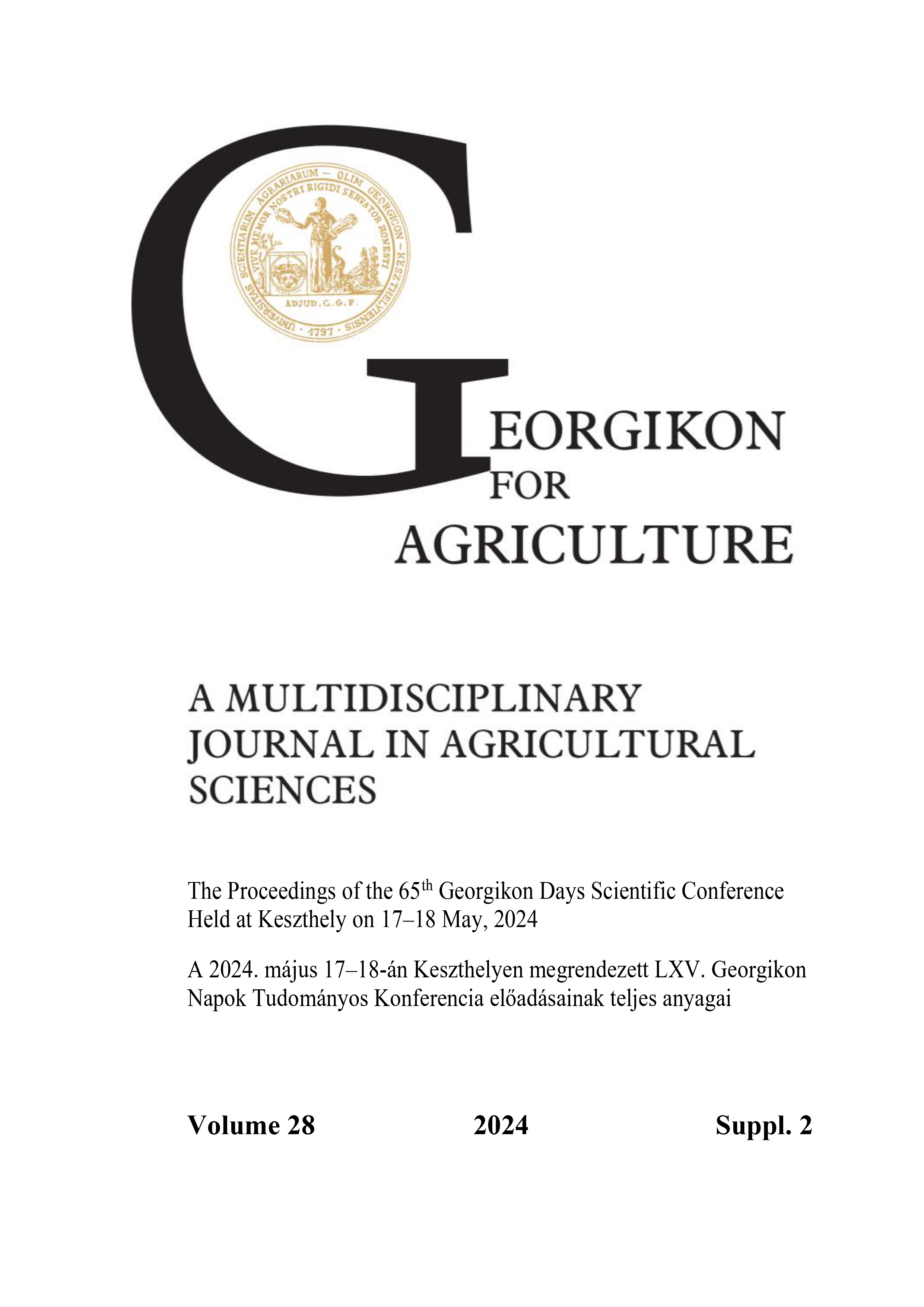Effect of Ground Cover and Shading on Herbaceous Antioxidant Capacity in an Agroforestry System
Keywords:
agroforestry, antioxidants, herbs, soil cover, climate changeAbstract
In addition to traditional crops (cereals, vegetables, etc.), agroforestry systems also allow the cultivation of other herbaceous crops such as medicinal plants. Medicinal plants contain a wide range of extractives, many of which have beneficial physiological effects (e.g. antioxidant properties). In the present work the antioxidant content of three species (common sorrel, Rumex acetosa L., ribwort plantain, Plantago lancelota L., dwarf periwinkle, Vinca minor L.) grown in the agroforestry system of the Bajti Nursery under different soil cover methods (mulching, geotextile, bee pasture) and shading (hybrid poplar (Populus euramericana (Dode) Guiner cv. 'I-214') was evaluated. The aim of our studies was to compare which soil covers are the most advantageous on the antioxidant content, and how each plant species responds to different soil covers. Samples were collected three times during the growing season in 2023 (spring, summer, autumn). The antioxidant capacity of the samples was measured by three different methods (TPC, FRAP, DPPH). It was found that the cultivation method resulting in the highest antioxidant capacity varies between plant species.
References
Balogh, E. 2010. Determination of antioxidant capacity and its contributing compounds in berry fruits. PhD thesis. PhD.
Bello, O. M., Fasinu, P. S., Bello, O. E., Ogbesejana, A. B., Adetunji, C. O., Dada, A. O., Ibitoye, O. S., Aloko, S., Oguntoye, O. S. 2019. Wild vegetable Rumex acetosa Linn.: Its ethnobotany, pharmacology and phytochemistry. South African Journal of Botany. 125 149–160. https://doi.org/10.1016/j.sajb.2019.04.018
Benzie, I. F. F., Strain, J. J. 1996. The Ferric Reducing Ability of Plasma (FRAP) as a Measure of ‘‘Antioxidant Power’’: The FRAP Assay. Analytical Biochemistry. 239 (1) 70–76. https://doi.org/10.1006/abio.1996.0292
Chu, W. L. 2011. Potential applications of antioxidant compounds derived from algae. Current Topics in Nutraceutical Research. 9 (3) 83–98.
den Herder, M., Moreno, G., Mosquera-Losada R. M., Palma, J. H. N., Sidiropoulou, A., Frejanes J. J. S., Crous-Duran, J., Paulo J. A., Tomé, M., Pantera A., Papanastasis V. P., Mantzanas, K., Pachana, P., Papadopoulos, A., Plieninger. T., Burgess, P. J. 2017. Current extent and stratification of agroforestry in the European Union. Agriculture, Ecosystems and Environment. 241 121–132. https://doi.org/10.1016/j.agee.2017.03.005
Guti, E. 2023. Összehasonlító mikroklíma vizsgálatok a bajti csemetekert köztestermesztéses agrárerdészeti rendszerében. Diplomamunka. Soproni Egyetem, Sopron.
Koel, M., Kuhitinskaja, M., Vaher, M. 2020. Extraction of bioactive compounds from Catharanthus roseus and Vinca minor. Separation and Purification Technology. 252. 117438. https://doi.org/10.1016/j.seppur.2020.117438
Ong, E. S. 2004. Extraction methods and chemical standardization of botanicals and herbal preparations. Journal of Chromatography B. 812 (1–2) 23–33. https://doi.org/10.1016/S1570-0232(04)00647-6
Rigueiro-Rodríguez, A., McAdam, J., Mosquera-Losada, M.R. (eds.) 2008. Agroforestry in Europe: Current Status and Future Prospects. Springer, Dordrecht. https://doi.org/10.1007/978-1-4020-8272-6
Sharma, O. P., Bhat, T. K. 2009. DPPH antioxidant assay revisited. Food Chem. 113 (4) 1202–1205. https://doi.org/10.1016/j.foodchem.2008.08.008
Thiviya, P., Gamage, A., Piumali, D., Merah, O., Madhujith, T. 2021. Apiaceae as an Important Source of Antioxidants and Their Applications. Cosmetics. 8 (4) 111. https://doi.org/10.3390/cosmetics8040111
World Health Organization, 1999. WHO monographs on selected medicinal plants. World Health Organization, Genova.
Downloads
Published
Issue
Section
License
Copyright (c) 2024 Eszter Visiné Rajczi, Dénes Benke, Tamás Hofmann

This work is licensed under a Creative Commons Attribution-NonCommercial-NoDerivatives 4.0 International License.
Cikkre a Creative Commons 4.0 standard licenc alábbi típusa vonatkozik: CC-BY-NC-ND-4.0. Ennek értelmében a mű szabadon másolható, terjeszthető, bemutatható és előadható, azonban nem használható fel kereskedelmi célokra (NC), továbbá nem módosítható és nem készíthető belőle átdolgozás, származékos mű (ND). A licenc alapján a szerző vagy a jogosult által meghatározott módon fel kell tüntetni a szerző nevét és a szerzői mű címét (BY).




